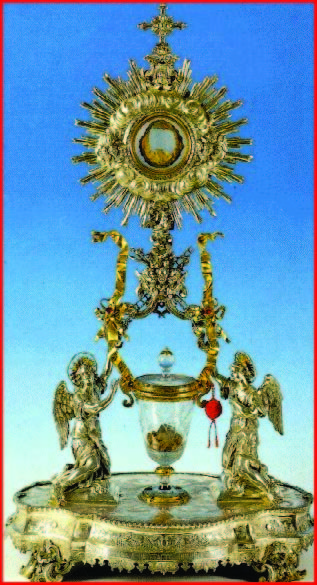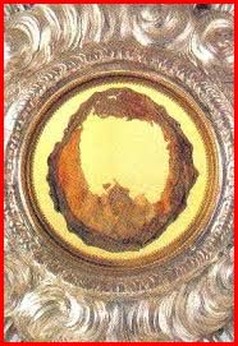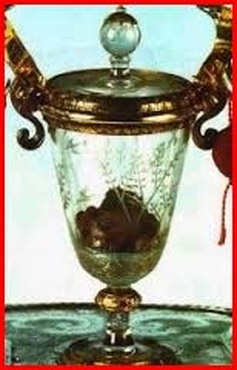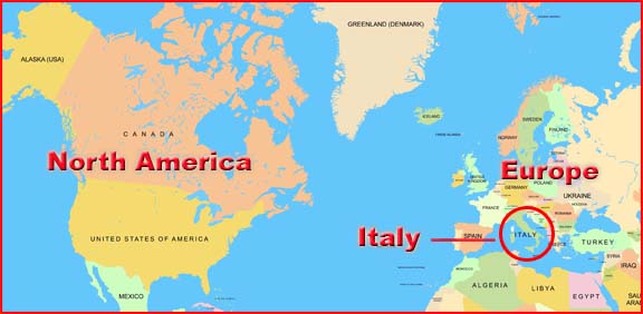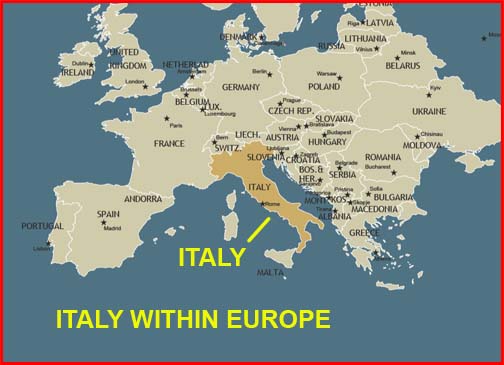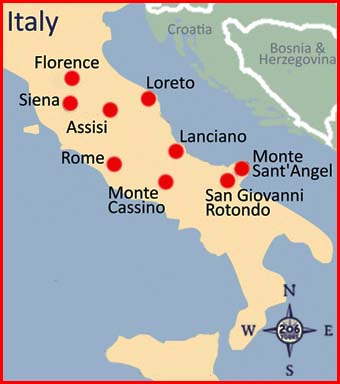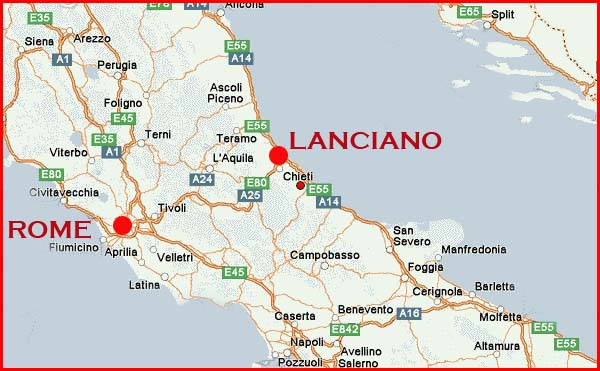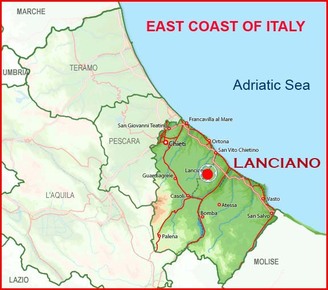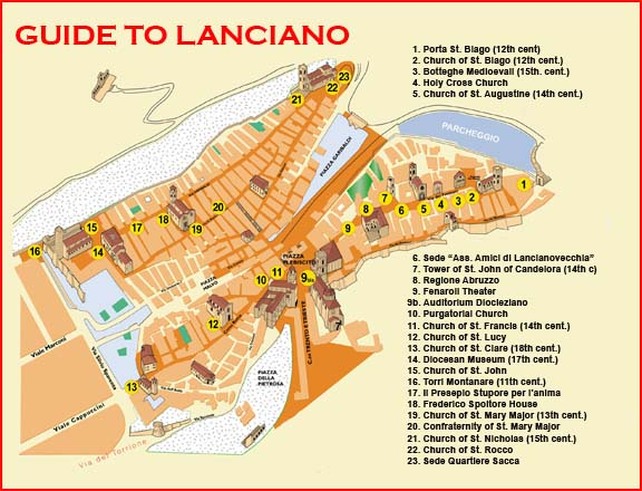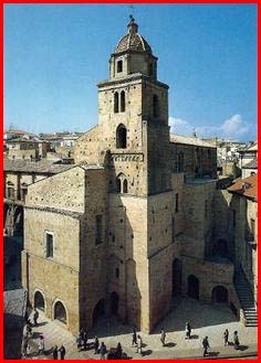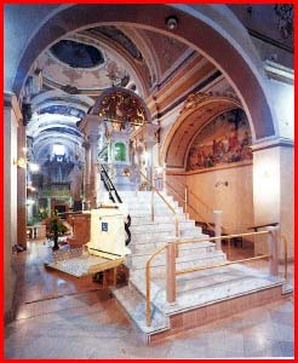| Devotion to Our Lady |
|
- Homepage
-
Daily Thoughts
- 2023 October Daily Thoughts
- Daily Thoughts Lent 2020
- Daily Thoughts for Advent 2019
- Daily Thoughts for October 2019
- Daily Thoughts for September 2019
- Daily Thoughts for August 2019
- Daily Thoughts for July
- Daily Thoughts for June
- Daily Thoughts for Easter 2019
- Daily Thoughts for Lent 2019
- Daily Thoughts for Christmas
- Daily Thoughts Easter 2022
- Sacred Heart
- Holy Ghost
-
Spiritual Life
- Holy Mass Explained
- First Friday Devotions
- First Saturday Devotions
- The Mercy of God
- Vocations
- The Path Everyone Must Walk >
- Gift of Failure
- Halloween or Hell-O-Ween?
- Ignatian Spiritual Exercises >
- Meditation is Soul-Saving
- Spiritual Communion
- Miraculous Medal
- Enrollment in Miraculous Medal
- St. Benedict Medal
- Holy Water
- Advice on Prayer
- Your Daily Mary
-
Prayers
- September Devotions
- Seven Sorrows of Our Lady
-
Novenas
>
- NV-Help of Christians
- NV-Nativity of Our Lady
- NV-Seven Sorrows
- NV- Sorrowful Heart
- NV-Pope St Pius X
- NV-La Salette
- NV-St Michael Archangel
- NV-Immaculate Heart
- NV-Assumption
- NV-Novena for Fathers
- NV-Novena for Your Mother
- NV-St Raphael Archangel
- NV-Souls in Purgatory
- NV-All Saints Day
- NV-Christ the King
- NV-Divine Motherhood
- NV-Guardian Angels
- NV-Rosary
- NV-Mirac Med
- NV- Imm Conc
- NV - Guadalupe
- NV - Nativity of Jesus
- NV-Epiphany
- NV-OL Good Success
- NV-Lourdes
- NV-St Patrick
- NV-St Joseph
- NV-Annunciation
- NV-St Louis de Montfort
- NV-OL Good Counsel
- NV-Last Supper
- NV-Passion
- NV-Pentecost
- NV-Ascension
- NV-Sacred Heart
- NV-Sacred Heart & Perpetual Help
- NV-Corpus Christi
- NV-OL of Perpetual Help
- NV-Queenship BVM
- NV-OL of Mount Carmel
- NV-St Mary Magdalen
- NV- Im Hrt
- August Devotions to IHM
- Immaculate Heart of Mary
- Litany of Dependence
- Prayers to St Mary Magdalen
- Prayers in Times of Sickness Disease & Danger
- Holy Souls in Purgatory
- Meditations on the Litany of Our Lady
- Special Feast Days
- Prayers to Mary (Mon-Sun)
- Litanies to Our Lady >
- Various & Special Needs
- Our Lady of the Rosary
- Our Lady of Mt. Carmel
- Our Lady of Perpetual Help
- Our Lady of Guadalupe
- Other titles of Our Lady
-
Rosary
- Downloads
- Consecration
- Easter Season
-
Holy Week
- Last Seven Words of Jesus >
- Characters of Passion >
- The Last Days of Christ
- Before Palm Sunday
- Palm Sunday
- Monday in Holy Week
- Tuesday in Holy Week
- Wednesday in Holy Week
- Holy Thursday (Last Supper)
- Holy Thursday (Agony & Arrest)
- Night Vigil with Christ
- Good Friday (Pilate & Herod)
- Good Friday (Way of Cross & Crucifixion)
- Saturday in Holy Week
-
Lent
- Ideas for Lent
- Daily Lenten Planner
- Daily Lenten Liturgy
- From Cold to Hot
- Lent with Aquinas
- Lent with Dom Gueranger
- Virtues for Lent
- History of Penance
- How Expensive is Sin?
- Confession of Sins
- Letter to Friends of the Cross
- Sermons for Lent
- Stations of the Cross >
- Lenten Prayers
- 7 Penitential Psalms
- Lenten Psalms SUN
- Lenten Psalms MON
- Lenten Psalms TUE
- Lenten Psalms WED
- Lenten Psalms THU
- Lenten Psalms FRI
- Lenten Psalms SAT
- Lenten Laughs
- Septuagesima
-
Christmas
- Epiphany Explained
- Suggestions for Christmas
- Food For Thought
- Christmas with Aquinas
- Christmas with Dom Gueranger
- Christmas Prayers
- Candles & Candlemas
- Christmas Sermons
- Christmas Prayers SUN
- Christmas Prayers MON
- Christmas Prayers TUE
- Christmas Prayers WED
- Christmas Prayers THU
- Christmas Prayers FRI
- Christmas Prayers SAT
- Twelve Days of Christmas >
-
Advent Journey
- Purgatory
- Christ the King
- Legion of Mary
- Scapular
-
Saints
-
Martyrs for the Faith
>
- Your Daily Martyr >
- All 365 Days of Martyrs
- Cristeros
- St Valentine & Valentine's Day
- Martyrs--Thomas Becket
- Martyrs--John the Apostle
- Holy Machabees
- Age of Martyrdom
- Carmelites of Compiegne
- Martyrs--Peter & Paul
- Martyrs--John the Baptist
- Martyrs--Andrew
- Martyrs--James the Great
- Martyrs--North American
- Martyrs--Seven Holy Sleepers
- Martyrs--Afra
- School of Martyrdom
- Martyrs--Christina
- Desert Saints >
- Saints for Sinners >
- Saints of Mary >
- History of All Saints Day
-
Martyrs for the Faith
>
- Precious Blood
- Synod 2023
-
Catechism
- Catechism Lesson 1
- Catechism Lesson 2
- Catechism Lesson 3
- Catechism Lesson 4
- Catechism Lesson 5
- Catechism Lesson 6
- Catechism Lesson 7
- Catechism Lesson 8
- Catechism Lesson 9
- Catechism Lesson 10
- Catechism Lesson 11
- Catechism Lesson 12
- Catechism Lesson 13
- Catechism Lesson 14
- Catechism Lesson 15
- Catechism Lesson 16
- Catechism Lesson 17
- Catechism Lesson 18
- Catechism Lesson 19
- Catechism Lesson 20
- Catechism Lesson 21
- Catechism Lesson 22
- Bible Study
-
Calendar
- Miracles
- Apparitions
- Shrines
- Prophecies
- Angels Homepage
- Hell
-
Church Crisis
- Conspiracy Theories
- Amazon Synod 2019 >
- Liberalism & Modernism
- Modernism--Encyclical Pascendi
- Modernism & Children
- Modernism--Documents
- The Francis Pages
- Church Enemies on Francis
- Francis Quotes
- Amoris Laetitia Critique
- Danger of Ignorance (Pius X)
- Restore all In Christ (Pius X)
- Catholic Action (Pius X)
- Another TITANIC Disaster?
- The "Errors of Russia"
- CRISIS PRAYERS
- Election Novena 2024
- The Anger Room
- War Zone
- Life of Mary
- Spiritual Gym
- Stupidity
- Coronavirus and Catholicism
- History & Facts
- Books
- Catholic Family
- Children
- Daily Quiz
-
Novena Church & Pope
- Day 01 Church-Pope Novena
- Day 02 Church-Pope Novena
- Day 03 Church-Pope Novena
- Day 04 Church-Pope Novena
- Day 05 Church-Pope Novena
- Day 06 Church-Pope Novena
- Day 07 Church-Pope Novena
- Day 08 Church-Pope Novena
- Day 09 Church-Pope Novena
- Day 10 Church-Pope Novena
- Day 11 Church-Pope Novena
- Day 12 Church-Pope Novena
- Day 13 Church-Pope Novena
- Day 14 Church-Pope Novena
- Day 15 Church-Pope Novena
- Day 16 Church-Pope Novena
- Day 17 Church-Pope Novena
- Day 18 Church-Pope Novena
- Day 19 Church-Pope Novena
- Day 20 Church-Pope Novena
- Day 21 Church-Pope Novena
- Day 22 Church-Pope Novena
- Day 23 Church-Pope Novena
- Day 24 Church-Pope Novena
- Day 25 Church-Pope Novena
- Day 26 Church-Pope Novena
- Day 27 Church-Pope Novena
- Day 28 Church-Pope Novena
- Day 29 Church-Pope Novena
- Day 30 Church-Pope Novena
- Day 31 Church-Pope Novena
- Day 32 Church-Pope Novena
- Day 33 Church-Pope Novena
- Day 34 Church-Pope Novena
- Day 35 Church-Pope Novena
- Day 36 Church-Pope Novena
- Day 37 Church-Pope Novena
- Day 38 Church-Pope Novena
- Day 39 Church-Pope Novena
- Day 40 Church-Pope Novena
- Day 41 Church-Pope Novena
- Day 42 Church-Pope Novena
- Day 43 Church-Pope Novena
- Day 44 Church-Pope Novena
- Day 45 Church-Pope Novena
- Day 46 Church-Pope Novena
- Day 47 Church-Pope Novena
- Day 48 Church-Pope Novena
- Day 49 Church-Pope Novena
- Day 50 Church-Pope Novena
- Day 51 Church-Pope Novena
- Day 52 Church-Pope Novena
- Day 53 Church-Pope Novena
- Day 54 Church-Pope Novena
- Penance Novena
- Daily WeAtheR Forecast
TO VISIT A SHRINE
click on the shrine you would like to view
| Bethlehem | Nazareth | Lanciano | Lourdes | La Salette | Fatima | Guadalupe | Walsingham | Mount Carmel |
| Our Lady of Perpetual Help | St. Patrick's Purgatory |
click on the shrine you would like to view
| Bethlehem | Nazareth | Lanciano | Lourdes | La Salette | Fatima | Guadalupe | Walsingham | Mount Carmel |
| Our Lady of Perpetual Help | St. Patrick's Purgatory |
THE MIRACLE OF LANCIANO
Where the Host changes to the Heart of Jesus, and the Wine becomes His Blood
Where the Host changes to the Heart of Jesus, and the Wine becomes His Blood
|
THE BASIC FACTS
Location
The city is located in central Italy, near its eastern coastline with the Adriatic Sea, and sits upon hills with a town territory that covers 25 square miles, at an elevation of 870 feet above sea level. Its climate averages about 39°F in winter and 77°F in summer. It usually snows about three times a year. During the summer there can be sultry days. History The ancient Roman name of Lanciano was Anxanum, a city of the Frentani Italic tribe. The city is said to have been founded in 1181 BC by Solimus, a Trojan refugee arrived in Italy along with Aeneas. Legends aside, archaeological findings have shown that the area was settled from the 5th millennium BC. Under the Frentani it was probably under the influence of Greater Greece. After the end of the Samnite Wars, which saw the Frentani allied with the Romans, Lancianum obtained the status of municipium. It was probably a flourishing commercial site, across an ancient and important trade route connecting Pescara to Apulia. According to tradition, Lanciano is also the birthplace of Longinus the Roman centurion who thrust his spear into Jesus’ side during the Crucifixion: Lanciano in Italian means “of the Spear” or “of the Lance.” During the fall of the Western Roman Empire, Lanciano was sacked by the Goths, and was destroyed during the Lombard invasion (c. 571 AD). A new settlement was then created around a castle built by the new rulers. In 610, however, it was conquered by the Byzantines, who annexed it to the Duchy of Teate (Chieti) and allowed the trades to restart. In the late 8th century Lanciano was conquered by the Franks, who included it in the Duchy of Spoleto. It was around this time that the famous Eucharistic Miracle of Lanciano occurred. In 1060 the Normans made it a centre of the unified Kingdom of Sicily. Lanciano flourished again and in 1340 it was the largest city in Abruzzo with 6,500 inhabitants, renowned industries (ceramics, wool, silk, goldworks, ironworks), receiving important privileges by both Frederick II and his son Manfred, with a substantial administrative autonomy. Charles I, King of Sicily, assigned the revenues of the city’s port to the Vatican Basilica. Later it was frequently at war with nearby Ortona. It was here that Pope Gregory XII, fleeing from Cividale, landed on Neapolitan territory (1409), and went thence to Gaeta. After the end of the Italian Wars, the new Spanish rule and the shift of commerce due to the discovery of America impoverished Lanciano, which, in 1640, became a baronial possession. Later, the city took the part of the Neapolitan Republic of 1799 and rose against the Bourbon kings in 1848, 1849 and 1853. In 1860 it voted for annexation to the newly formed Kingdom of Italy. During World War II it was an active center of the Resistance against the German occupation. Chief Buildings Cathedral of Santa Maria del Ponte (“St. Mary of the Bridge”), so called because it is built on bridgework along a precipice: is the work of Michitelli (1619) and has some paintings by Pozzulaniello (Giacinto Diana). It houses also an 8th-century Byzantine statue portraying the Madonna, probably brought here during the iconoclast controversy. Chiesa di Santa Maria Maggiore, one of the most important architectural sites in Abruzzo. Built in 1227 according to Bourgogne-Cistercian lines, it was updated in 1540 in Baroque style, with the addition of two aisles and stucco decorations (recently stripped off). The main gate is from 1317. Chiesa di San Francesco (1258), built over a pre-existing 7th-century church. The high altar houses the relics of the Eucharistic Miracle. Chiesa di Sant’Agostino (1270). The façade has maintained the original rose window and the gate, while the single nave interior is a Baroque restoration. Chiesa di San Biagio (11th century) is the oldest church of the city. It has a bell tower and it’s always opened on 3 February for the anointing of the throat, a Catholic rite linked to the cult Saint Biagio. Torri Montanare, a relic of the ancient walls (11th century). They consist in two massive towers, the most recent dating to the 15th century, offering a panoramic view of the area. Porta San Biagio (11th century), the only one gate remaining of the nine once existing. Torre civica (19th century), was built over a pre-existing tower next to the Cathedral. Nowadays it is a belfry and a clock tower. Torre Aragonese, (15th century) was a tower along the ancient walls. Palazzo dell’Arcivescovado, (16th century) is still the seat of the archbishop and houses a diocesan Museum. Botteghe medievali, was a house built in 1434. It has two floors and on the ground floor there are antique shops, with external bank according to the Roman use. |
WHERE ON EARTH IS LANCIANO
THE ACCOUNT OF THE MIRACLE
Around the year 700 in the Monastery of St. Longinus (the Roman soldier who pierced the side of Christ with a lance), a priest-monk of the Order of St. Basil was celebrating the Mass from the Sacramentary of St. Gregory the Great (dating from around 600 A.D.), a Mass very close to our Latin Tridentine Mass, that was in common usage until the Second Vatican Council (1962-1965). Having suffered recurring doubts about Transubstantiation, he had prayed much to God, that those doubts might be removed from his mind.
Suddenly, on uttering the words “This is My Body….This is My Blood,” he noticed blood dripping from the white host. Amazed and terrified, the monk stared silently at the Sacred Species. His terror soon subsided, and his heart became filled with indescribable joy. After a long period of ecstatic silence, his face radiant with joy and streaked with tears of happiness, the monk turned to his fellow monks and the faithful attending the Mass and said to them, “Here is the real Body and Blood of our Lord Jesus Christ, which He has made visible to me, that I may no longer be a disbeliever, but a believer.” The Flesh had remained intact, but the Blood in the chalice soon divided into five pellets, reminding one of the five wounds of Christ of unequal size and irregular shape. The monks decided to weigh the pellets. It was discovered that the combined weight of the five clots of Blood was equal to the individual weight of any one of them, a miraculous confirmation of the Church teaching that Our Lord is as equally present in the smallest piece of the Host as the whole Host. That same Host made Flesh remains intact until this date, and today it is enclosed in a monstrance of finely sculptured silver and crystal. The globules of Blood are held in a chalice of etched crystal thought to be the original where the miraculous change occurred. News of this wondrous event quickly spread throughout the district. Before long the church became a popular shrine, attracting thousands of pilgrims. The Sacred Species were duly preserved in a special reliquary. In time, numerous legends began to spread about the Eucharistic miracle. Through the centuries there have been a number of careful authentications. On November 19, 1970 the most detailed scientific investigation was carried out by noted scientists in many different fields (hematologists, anatomists, pathologists, histologists, biochemists, etc.), and led by the renowned Italian Doctor and Professor Odoardo Linoli, eminent Professor of Anatomy, Pathological Histology, Chemistry, and Clinical Microscopy, to conduct a thorough investigation. Dr. Ruggero Bertelli of the University of Siena, was among the other doctors and scientists that assisted him. The inquiry took several months to complete. Released to the public on March 4, 1971, the findings caused a sensation, making headlines in all the Italian dailies. The commission confirmed what tradition had always held. On examining the monstrance, it was observed that the lunette containing the Flesh was not hermetically sealed; that is to say, even though it had been exposed to atmospheric and biological agents, it had not decomposed since the year 700. It was also found that the center of the Sacred Host – the only part that remained bread – had entirely decayed. The five pellets of Blood had not changed in appearance over the centuries and were incorrupt. Professor Linoli headed a team of scientists who examined the Eucharistic miracle. In short the conclusions of the scientific data are: ● The Flesh is authentic human flesh, being the striated muscular tissue of the myocardium (inner heart wall), having no trace whatsoever of any agents used for preservation. ● The “miraculous Blood" is truly blood. The chromatographic analysis indicated this with absolute and indisputable certainty. ● The Blood and the Flesh were found to belong to the rare blood type AB. This matches the blood type as that of the man of the Shroud of Turin and the type most characteristic of Middle Eastern populations. ● The Blood of the Eucharistic miracle was found to contain the following minerals: chloride, phosphorus, magnesium, potassium, sodium and calcium, all normal components of blood. ● The protein components were normally fractionated (have the normal protein distribution) with the same percentage ratio as those found in normal fresh blood. ● All the scientists agreed that the Flesh and Blood would have rapidly decayed without effective preservatives. No histological dissection has revealed any trace of salt infiltrations or preservative substances used in antiquity for the purpose of embalming. Science is at a lost to explain how for twelve centuries the flesh and blood were spared the process of decay and how to this day they remain in such a perfect state of preservation. Professor Lisoli, famous for anatomical studies, conclusively excluded the possibility of a fraud, affirming that no human hand could have made such an expert cut from the Heart, which was made tangentially, that is, a round cut, thick on the outer edges and lessening gradually and uniformly into the empty central area. For the great multitude of pilgrims who have witnessed this great miracle and who truly believe in Jesus Christ, there can be no doubt that Transubstantiation actually effects His presence. It has been the traditional belief of the monks at Lanciano, ever since that great miracle occurred, that when the the priest gives us the Sacred Host in Holy Communion, what we are receiving is the Flesh and Blood of the Sacred Heart of Jesus. The fact that the Sacred Host of Lanciano is the myocardium of the heart and that the Blood fell from the Host into the chalice gives much credibility to this belief. It is interesting that God permitted these scientific discoveries at a time when the Faith of people would diminish in the Holy Eucharist. It is estimated that today, around half of the world's Catholics (but probably much more) no longer believe in the Real Presence of Jesus in the Holy Eucharist, and there are not just a few priests who also lack this belief! May this great Eucharistic miracle pierce the heart of those skeptical priests so that they fully realize that in every true Holy Communion, Our Lord is really present. And may it put to rest any doubts about the great miracle of Transubstantiation. |
Web Hosting by Just Host




